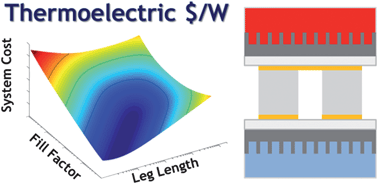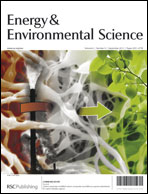Thermoelectric materials for power generation are typically compared using the dimensionless figure-of-merit ZT because it relates directly to the device efficiency. However, for practical applications, the cost of power generation – as governed by material, manufacturing, and heat exchanger costs – is also a critical factor which is not captured in ZT alone. The necessary analysis, derived herein, optimizes the coupled thermoelectric and economic problem for the leg length, L, and system fill factor, F, as functions of these costs. Fuel, operating, and maintenance costs are excluded. This optimization yields the minimum $ per W value for thermoelectric power generation and a framework for comparing materials beyond ZT. This analysis shows that even very expensive thermoelectric materials have the potential to be the most cost effective at the system level, if incorporated with sufficiently short legs and small fill factor. An approximate scaling analysis, verified using numerical calculations, gives the first closed-form, analytical expressions for optimal L and F to minimize $ per W. The analysis also delineates various cost-dominant regimes with different priorities for materials development, including: (i) a heat exchanger cost dominated regime, where ZT should be increased regardless of material or manufacturing costs; (ii) an areal cost, C′′, dominated regime at fixed F, where ZT/C′′ should be maximized, and (iii) a volumetric cost, C′′′, dominated regime at fixed F, where ZT/(kC′′′) should be maximized, reinforcing the need for low thermal conductivity, k. The cost–performance framework derived here will be applied to a number of real materials and applications in a separate manuscript.


 Please wait while we load your content...
Please wait while we load your content...